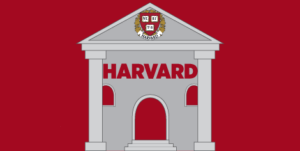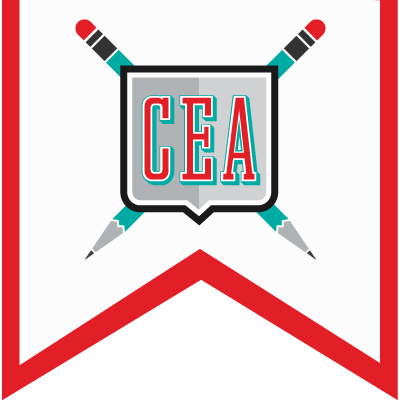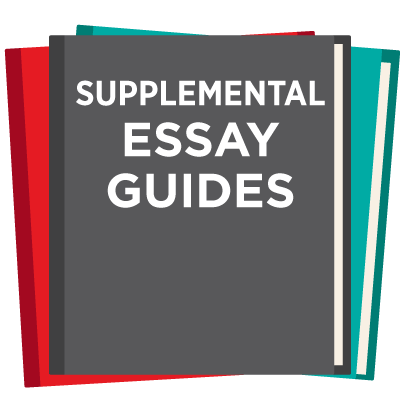Harvard’s Restrictive Early Action Strategy: Maximizing Your Chances Before the November Deadline
 Harvard’s Restrictive Early Action program is a non-binding early admissions option that allows students to receive an admissions decision by mid-December. Imagine having your results before the holiday break! What a relief to be able to relax and enjoy time with your family rather than writing more essays at the last minute. Applying Restrictive Early Action to Harvard gives students a chance to stand out early in the application process, making a compelling case to the admissions committee. Though there may be others with similar qualifications as you, getting in that pile first does make a difference! This guide will cover essential strategies to help students craft a strong application and manage the timeline, increasing your chances of acceptance.
Harvard’s Restrictive Early Action program is a non-binding early admissions option that allows students to receive an admissions decision by mid-December. Imagine having your results before the holiday break! What a relief to be able to relax and enjoy time with your family rather than writing more essays at the last minute. Applying Restrictive Early Action to Harvard gives students a chance to stand out early in the application process, making a compelling case to the admissions committee. Though there may be others with similar qualifications as you, getting in that pile first does make a difference! This guide will cover essential strategies to help students craft a strong application and manage the timeline, increasing your chances of acceptance.
This article is designed to provide prospective Harvard applicants with an understanding of the benefits and intricacies of Harvard’s Restrictive Early Action program. Read on for an outline of key strategies for preparing a strong application, including time management tips, essay strategies, and the unique advantages of applying early.
What is Harvard’s Restrictive Early Action Program?
Harvard’s Early Action program is a non-binding option where students apply by November 1 and receive their decisions by mid December. They state, “If your record and accomplishments have been consistently strong over time, Restrictive Early Action may be an attractive choice. You don’t have to commit to coming to Harvard, but you will learn earlier if it is an option for you.” Though you are not required to attend if you apply, their site also explains this option does feature one main restriction: “If you are applying to Harvard under Restrictive Early Action, you may not apply to any other private institution under an Early Decision, Early Action, or Restrictive Early Action plan, or to a binding early program at a public university.” But they do state what you can do, so read carefully:
You are welcome to apply early to any public university, military academy, or university outside of the United States under a non-binding program.
Additionally, you are able to apply to other universities under their Regular Decision or Early Decision II programs.
Basically, they don’t want you bound to attend another school if you utilize their Restricted Early Action application process, but are open to you applying Regular Decision/Early Decision II so long as you could still attend Harvard if you were accepted to any and all options on the table.
Benefits of Applying Early Action to Harvard
One key advantage of Harvard’s Restrictive Early Action is demonstrating a strong interest in their university. By taking the time and effort to utilize this special application process, you’re showing admissions that they are among your top choices, if not the top choice. This is appealing to them as it displays your commitment as a future member of their campus, and they’re looking for dedicated cohorts of eager students.
Additionally, applying when there are fewer applicants works toward your advantage. Although they state on their site that the early acceptance rates are higher due to the quality of candidates who choose to apply, we don’t see the harm in also being among fewer candidates when you’re under the microscope.
Another benefit of applying via Restrictive Early Action is the possibility of being deferred to Regular Decision if you’re not accepted. Don’t be discouraged if you don’t make it in the early round! There’s still hope, and College Essay Advisors are experts at crafting deferral letters, so don’t hesitate to reach out and find out what your options are if you’re deferred.
Overall, applying early reflects organization and commitment. When admissions sees your buttoned up application, complete with transcripts, letters of recommendation, creative (and well-written!) essays, they’re sure to take notice and appreciate your hard work.
Key Deadlines and Requirements for Harvard’s Early Action
SAT/ACT: Spring or Summer (prior to the year you apply), because according to their site, they “request that [Restrictive Early Action applicants] submit your required test scores by the end of October. However, you are still eligible to apply using the November series as they should reach us in time for consideration.”
The Restrictive Application Deadline: November 1 at 11:59 p.m. – high school counselors may submit supporting materials up to one week later, but we recommend not taking any chances!
By the application deadline, you’ll need to have prepared your:
- Common Application/Coalition essay
- Supplemental essays unique to Harvard University
- Activities list
- SAT/ACT test scores (with some exceptions)
- School report, including your transcripts, counselor letter, and two (2) teacher recommendations
- Mid-year school report for the first semester of your senior year and the final school report once you are admitted and have completed your final year of high school
- Additional materials (not required, but may be submitted): AP exam results
- An $85 application fee
For a full and detailed list of application requirements, please refer to Harvard’s website.
As you can see, the requirements are thorough and will take time to complete, so we recommend starting early and managing your time well. We also recommend taking time to brainstorm, outline, draft, and edit as your personal statement and supplemental essays are your only chance to “be in the room” with admissions and speak in your own voice. Never underestimate the power of the personal story and unique nature of who you are. Transcripts can be applied to nearly anyone, but your own words are influential and can be a powerful force to get you on that admissions list.
Strategic Tips for Your Early Action Application to Harvard
Each moving part of your application gives you the opportunity to highlight your strengths and get detailed about your experiences. The Activities List and personal statement are your chance to explore details. Were you on the rowing team or did you take on a leadership role on and off the water as the team’s chief cheerleader? Did you merely start a Korean Culture Club or did you foster a friendly environment for students to explore their heritage and share it with others through weekly meetings and potlucks? See how details can paint a picture and reveal more about you? Never settle for simple when it comes to presenting who you are to admissions.
A hard truth? There are a lot of other students out there who, if not differentiated by details and a unique background story, look a lot like you on paper! You’d be shocked at how many All-American football players also speak Spanish and have impeccable AP scores. So think about what makes you stand out and give the reader what they want: memorable specifics.
And we’ll say it again: the best way to squeeze the most out of these limited documents and essays is to start early. We’ll keep beating that drum. Procrastination is the enemy of success when it comes to college admissions—trust us, we’ve seen it all!
Additionally, we recommend that you are strategic about who you are asking to write your recommendations and how you go about it. Keep their limited time in mind and ask early. Are there teachers who have made an impact on you? Let them know in your request. Though many of us assume teachers are all-knowing (and, yes, some have eyes in the backs of their heads, it’s true) they don’t always know the depth to which they’ve affected you or had an impact on your aspirations as a college student.
So this is the perfect time to let them know while also giving them something to mull over. A few words of acknowledgement will go a long way and jog their memory of what you were like in their classroom. They have a lot going on and plenty of students to cover, so giving them time and a thoughtful jumping off point will go a long way!
Crafting Your Harvard Personal Statement: Make It Stand Out
As we stated above, a compelling personal statement (which will go to every school you apply to via the Common App, not just Harvard) is your chance to be in the room with admissions and speak in your own voice. We suggest focusing on unique experiences, personal growth, or meaningful challenges. Don’t be afraid to reveal something vulnerable about your life experiences so long as you stick the landing and spend most of your word count on how you overcame the hardship or learned a lesson from your experience. Authenticity is queen here.
Admissions has heard a lot of stories about how a torn ACL ruined a soccer career, but they haven’t heard about how you took your experience on crutches and made waves in your district about special-needs accessibility on campus. Captivate your reader with a narrative flow, starting with a hook, drawing them in with details, and rounding out your story with acknowledging what you learned and who you are today because of your life experiences thus far.
What Happens if You’re Deferred in Restrictive Early Action?
If you are deferred in the Restrictive Early Action Application round, you will still be considered for admission via the Regular Decision application round. Plenty of students are deferred, so don’t worry! There is still hope for admission so long as you take the time to write a distinct deferral letter (and evaluate your application to see how you might be able to improve your essays in time to submit your Regular Decision applications to the other schools on your list). Anything that can strengthen your application and make an impression in a deferral letter is welcome (personal, academic, and otherwise!).
Frequently Asked Questions
Yes! You can apply to any public university, military academy, or university outside of the United States under a non-binding program. You cannot, however, apply to private universities via the Early Action application round.
While we don’t know for sure whether applying Restrictive Early Action (REA) will improve your chances of acceptances at Harvard, we do know that admissions tends to accept a higher percentage of REA applicants as opposed to Regular Decision (RD) applicants. For that reason, we recommend that applicants apply to Harvard via REA if it is their top-choice school.
Harvard tends to accept a higher percentage of applicants who apply via the Restrictive Early Action (REA) application round. You’ll also hear back from admissions in mid-December, as opposed to late March when Harvard releases their Regular Decision application decisions.
Make your Restrictive Early Action application to Harvard stand out by being specific and authentic in your admissions essays. You’ll also want to consider all of your essays together to make sure you are not being redundant.
No, Harvard’s Restrictive Early Action (REA) decision is non-binding, which means that you are free to accept admission at another institution even if you’re accepted to Harvard REA.










